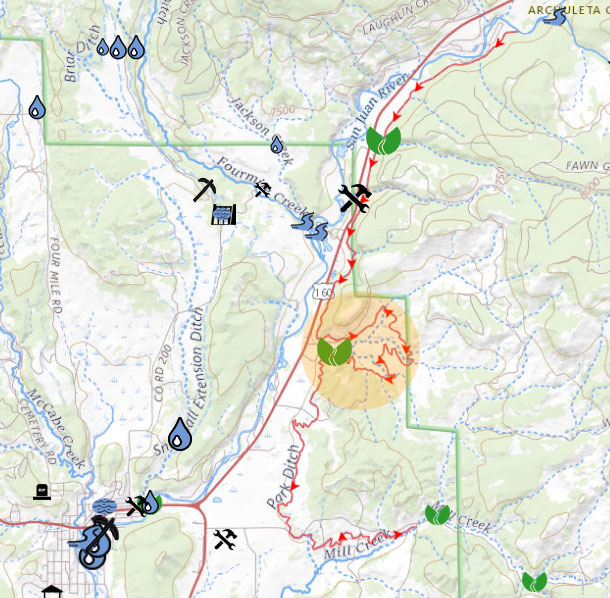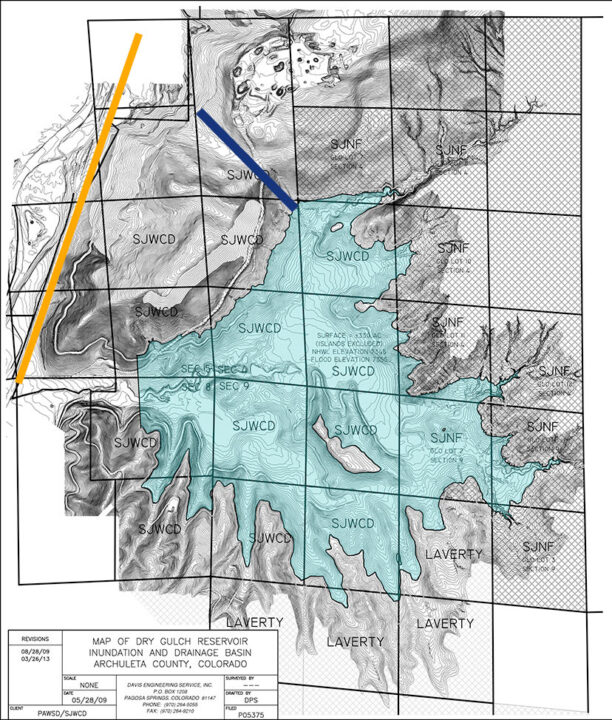Long as I remember, the rain been coming down
Clouds of mystery pouring, confusion on the ground
Good men through the ages, trying to find the sun
And I wonder, still I wonder
Who’ll stop the rain?
— from ‘Who’ll Stop the Rain’ by John Fogerty
A person, concerned about access to water in the American West, sent me an email the other day which read, in part:
Water issues are complicated for the entire West. It hasn’t been helped by the fact that this precious resource has been over allocated given the reality of water flows over the last 100 years.
I do believe that increasing storage of this resource will allow us to have water to use when it is needed. Otherwise, later starts of snowfall season and earlier melt offs which are widely predicted will cause us to be out of water when we need it because it will have left us.
Not everyone in Pagosa Springs is overly concerned about this particular threat — that the rivers and lakes in Archuleta County will dry up and leave us without access to water.
But some people are.
We heard some comments about water on Tuesday, June 20, at the Archuleta Board of County Commissioners’ work session, when former Water Commissioner Bob Formwalt sat down at the table and discussed the Park Ditch. Mr. Formwalt bears a wealth of knowledge about the history of Archuleta County, and in particular, about the history of our ranching industry, and agricultural water use.
Agriculture was once the primary industry in Pagosa Springs. But according to the U.S Department of Agriculture, ranching in Archuleta County now appears to be functioning mainly a tax write-off. A 2017 report from USDA states that our agricultural industry, as a whole, produced a net income loss of $2.1 million.
Mr. Formawalt’s main topic on June 20 was the Park Ditch, an irrigation canal that runs alongside the San Juan River and then turns east to follow Mill Creek. From what I can tell, it serves maybe a dozen older ranch properties with free irrigation water — free, except for the cost of cooperatively maintaining the ditch.
The ranch properties are “older” in the sense that some have water rights dating back to the late 1800s or early 1900s. The Park Ditch itself has an historic water right allowing the diversion of up to 60 CFS (cubic feet per second).
To put that number in perspective, the entire Pagosa community’s drinking water needs can be met with a diversion of about 3 CFS.
The Park Ditch begins at the San Juan River, near San Juan River Village north of downtown Pagosa. In the map below, downtown Pagosa is at the bottom left. The Park Ditch is marked by the red line.
The northern half of the Park Ditch has been plagued, in the past (the past 100 years?) by unstable hillsides that have a habit of sliding into the ditch. Mr. Formwalt went into considerable detail concerning problems with a portion of the ditch that runs through a section of 40″ pipe near the High Country Lodge.
Near the end of Mr. Formwalt’s presentation, the conversation turned to the proposed Dry Gulch Reservoir, which — if it actually got built — would be located within the former Running Iron Ranch, marked (roughly) by the orange circle in the map above. We can see the red line of the Park Ditch meandering through the ranch. In fact, about three miles of the ditch are within the Running Iron Ranch.
Here’s County Commissioner Warren Brown, addressing Mr. Formwalt:
“Bob, earlier in your presentation, when you were talking about ‘Catchpole’s Mistake’, you had mentioned the Dry Gulch… a potential reservoir there; that it would solve the issues. Did I understand that correctly?”
Mr. Formwalt:
“Well, there’s also issues about how big they build that thing. One of the things — if they bore through that mountain, they would get 10 feet of elevation, of water in that lake. A tremendous amount of water.”
Mr. Formwalt has a point. When you are talking about a wide, shallow reservoir like the one shown in recent maps of the once-proposed Dry Gulch Reservoir, 10 more feet of depth would indeed mean a massive amount of additional stored water.
Disclosure: I currently serve on the Pagosa Area Water and Sanitation District (PAWSD) board of directors, but this editorial reflects only my own personal opinions, and not necessarily those the PAWSD board as a whole.
The map below shows (I believe) an 11,000 acre-foot reservoir that could conceivably be created on the Running Iron Ranch, someday, north of downtown Pagosa. The orange line is Highway 160. The blue line shows a tunnel that could possibly be drilled through the mountain from the area of the High Country Lodge and Ole Miner’s Steakhouse, to the Running Iron Ranch — a 600-acre ranch that currently belongs to Pagosa Area Water and Sanitation District (PAWSD) customers.
In 2008, PAWSD, in partnership with the San Juan Water Conservancy District (SJWCD), purchased the Running Iron Ranch for twice its appraised value, specifically to build a water reservoir like the one shown in the map above. In 2008, the reservoir was much larger, and was planned to contain about 35,000 acre-feet of stored water.
The Colorado Supreme Court rejected the requested water rights for such a large reservoir, as unjustified.
A few years later, PAWSD and SJWCD agreed, in a settlement with sportsman’s organization Trout Unlimited, to limit the size of the reservoir to 11,000 acre-feet.
So Mr. Formwalt’s comment, that a tunnel bored through the mountain could increase the size of the reservoir, is an interesting idea.
Except the size of the reservoir is currently limited to 11,000 acre-feet. To make it any larger would seemingly require a trip back to the Colorado Supreme Court?
I’m not sure if County Commissioner Warren Brown understands the complexity of the problems — legal, financial, social, and geological — with the construction of a reservoir in the Dry Gulch valley.
Commissioner Brown:
“Well, the whole point of my question was, this was an exceptional year, with the amount of water, generally we’re looking at…”
Mr. Formwalt:
“Yes, It’s a little bit above normal. Not a great deal…”
Commissioner Brown:
“I just think it’s time to start having serious discussions about the Dry Gulch Reservoir, again. Because we need the water storage. And we’ve seen what the demand on water has been. And it’s only going to continue…”
Really?
Does Commissioner Brown truly understand the demand on water here in Archuleta County?



